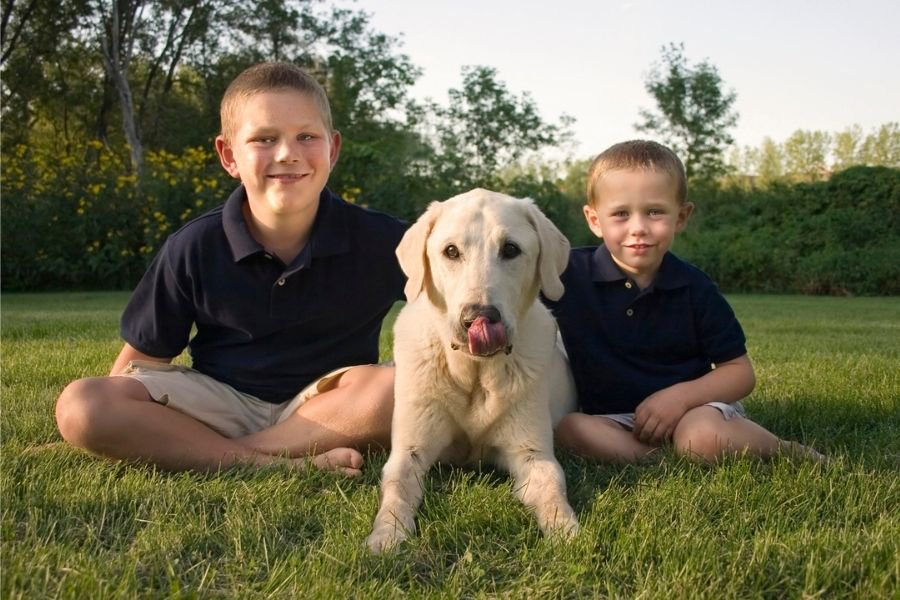
Image from Canva
What you'll find in this article:
Preparing Your Pet to Move
If you’re more worried about moving your pet for your next PCS than you are about your household goods, you’re not alone. Military families love their animals and will go to extremes to ensure they’re well-cared for during a PCS. It doesn’t matter which way they make the move—cars or airplanes, it’s up to us to find the best overall solutions to keep all of our doggos, cats, birds, and guinea pigs (add your animal here) happy and safe.
As soon as you get a solid idea you’re likely moving, it’s time to jump into information gathering mode. Waiting for hard orders wastes precious time you can’t get back, especially if you’re moving during the summer or overseas.
Regardless of where you move, there are some general tasks you can knock out or research before the last minute. Of course, you will have to tackle other tasks last minute, so take care of the non-time-sensitive chores first. You’ll want to read about:
- Required quarantines and vaccinations in the receiving location
- Microchip requirements
- Breed or species bans
- Base housing regulations regarding pets
- HOA rules
- Arrangements for boarding if pet-friendly temporary lodging isn’t available
- Paperwork you'll need to clear your pet from your current base or post
Who Pays for Your Pet's PCS Move?
New for 2024 PCS Moves
“The Department of Defense has approved a new policy to cover pet travel expenses, like pet shipping or quarantine fees, incurred by Service members during a Permanent Change of Station (PCS). As of January 1, 2024, military Service members going through a PCS within the continental United States can be reimbursed up to $550 for one household pet, either cat or dog, and up to $2,000 for moves to or from a location outside the continental United States to cover costs related to the transportation of a pet.”
It’s wise to talk to your local command about reimbursement. The branches tend to enact new policies differently.
Even with the new reimbursement policy, you’ll have to pay out of pocket for the services needed to get your pooch ready to drive or fly. Start now and add to your savings kitty for your Kitty Cat!
You’ll be on the hook for a variety of fees including:
- Health checks
- Vaccinations
- Quarantines
- Boarding fees
- Travel costs
There are some programs to help you afford your pet’s move. They provide relief for the moving costs through grants and zero interest loans.
Before Moving Day Arrives
When your PCS plans are coming together and you’re chatting with the representative at your pre-move assessment, clarify that your home includes companion animals. It’s helpful if the moving crew is aware of their presence. While the packing team is diligently boxing up all of your worldly possessions, your kitty and doggie can probably linger in your home, but you’ll need to secure them on moving day.

Image from Canva
Don’t forget to add your darling's accessories to your “Do Not Pack” stash. Beyond their food and medicine, keep your critters’ favorite toys or blankets with the items you plan to pack yourself. Setting aside a few familiar things can make the moving process seem less daunting for your precious ones.
Options for Transporting Your Pet
Most likely, the toughest part of your pet’s PCS is putting together the pieces of physically transporting your pet. Creating a comfortable, safe environment is the top priority, but budget restrictions can make this challenging.
6 Resources for a Military Move with Pets helps families make the best transport decisions and connects you with some helping organizations.

Image from Canva
Road Tripping with Your Pets
Here’s hoping your PCS is a manageable driving distance away. Driving is the simplest and cheapest way to transport any pet to their new home unless they’re not used to riding. Weeks ahead of departure, you’ll have to decide if your pet needs practice with a crate or seat belt extension.
Seat belts work well for large dogs whose crates take up valuable car space. However, some pets feel better in a crate that is firmly attached to the car seat. Start with short trips to fun places like the dog park or a welcoming friend’s house. Then, incrementally add time to the trips and watch for nervousness and motion sickness.
To ensure a good start, make sure you have this pet travel-friendly list of goodies covered before driving away.
- Food and treats
- Travel bowls
- Toys and bedding
- Seat belts, crates, and seat covers
- Access to bottled or stored water from home (to avoid upset stomachs that often come from out of town water)
- Medicines, both daily and preventative
- Collars and leashes
On the road, pay extra attention to your pet’s water and food intake, potty breaks, and their need to feel terra firma to stop upset tummies. Talk to your vet about more solutions for a successful ride and read 8 Tips for a Cross-Country Move with Pets for more pet travel hacks.
Prepping to Fly with Your Pets
Air travel regulations change frequently, and the updates can come out of the blue, like the recent restrictions of inbound U.S. travel for dogs and cats coming from countries with high rabies cases. Seasonal rules for heat and temperature safety also fluctuate, often coming to a halt when it’s too hot for pets to ride in cargo.
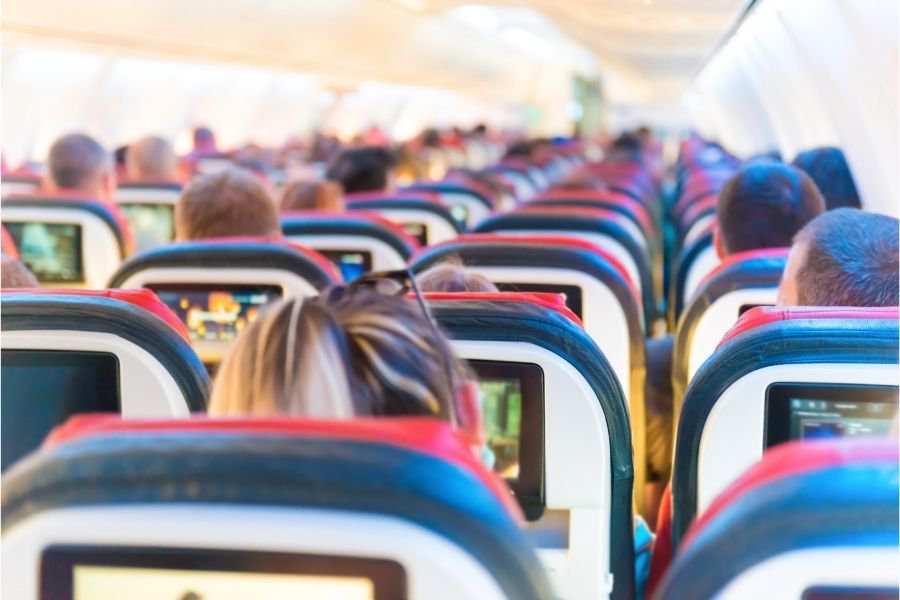
Image from Canva
Most airlines also require some vaccinations and identification, like rabies and microchips, but mandates vary.
You’re going to need plenty of patience and money to send your pet on an airplane safely. Depending on the airline, size of the animal, number of pets, and various other factors, families spend hundreds to thousands of dollars to fly their pets across the U.S. and abroad.
Acclimating Your Pet to a Crate
If your pet isn’t crate trained, it’s time to start practicing. Each airline has specific rules about the physical crate size and the amount of room the animal needs inside for cabin and cargo transport.
If you need help with crate training, watch this video from United Airlines.
Cabin Crates
There’s a chance your pet can fly with you in the cabin. Here’s Delta Airlines’ policy:
“Small dogs, cats, and household birds can travel in the cabin for a one-way fee, collected at check-in. They must be able to fit in a small, ventilated pet carrier that fits under the seat in front of you.”
Most airlines have similar policies with weight limits ranging between 10 and 20 pounds. Don’t forget; it’s likely the animal has to stay in the pet carrier for the entire length of the trip.
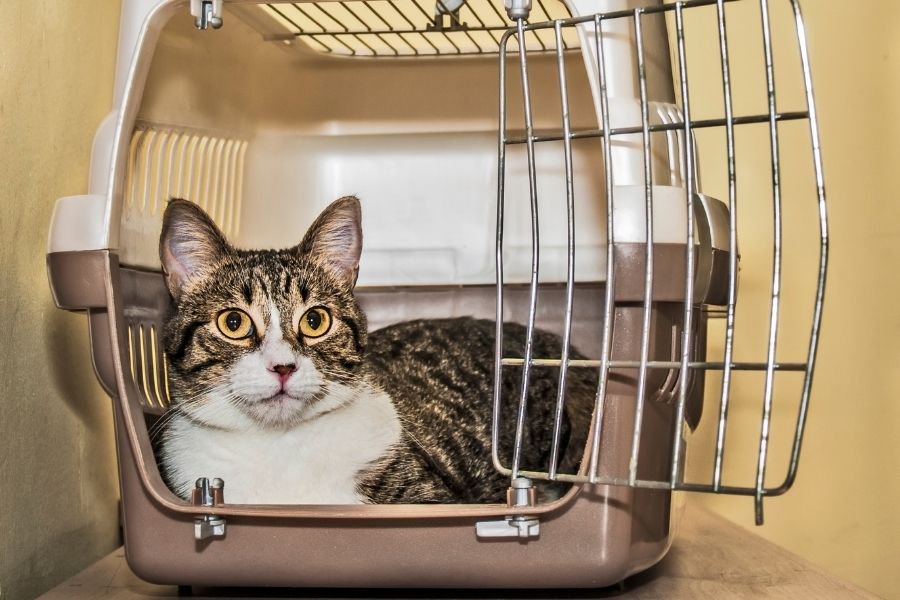
Image from Canva
Pets on OCONUS Flights
Pets on overseas flights have a unique set of hoops to jump through. The entrance laws depend on the country. This could involve more vaccinations, identification, and health certificates.
Timing is critical for a successful OCONUS trip, but we all know hard orders and visas take their sweet time. It’s not unheard of for families to split flights if the servicemember is expected at their new duty station, but the pet transport is delayed.
This ambiguity is one of the most frustrating parts of OCONUS travel because health certificates are dated and typically need certification ten days before the flight, which might not be possible while waiting on orders, passports, visas, and openings for pets on each flight.
The Center for Disease Control and Prevention has a helpful resource for overseas travel. In addition, the U.S. Department of Agriculture’s Animal and Plant Health Inspection Service also has specific information about what each country requires for animals to enter (possible quarantine), including what documentation your pet needs to come home to the U.S.
Stay Up to Date with Commercial Airlines’ Policies
The best source of information is to start with major airlines. Here’s what some of the most popular carriers have to say about flying military pets. Make sure you carefully read over how military pets and their payments are treated differently among the companies.
- Delta Airlines: Non-snub-nosed dogs and cats can fly. Birds, guinea pigs, rabbits, and hamsters can also fly to domestic locations.
- American Airlines: Eligible small pets can travel in the cabin, but their kennel replaces your carry-on allotment.
- United Airlines: See their updated military and State department pet travel regulations.
- Southwest: They do not have a military program but point out specific regulations for Hawaii travel.
Commercial Airline Alternatives
By far, the most coveted pet transportation option for an OCONUS PCS is what most people know as the Patriot Express, powered by the Air Force’s Air Mobility Command. These flights are based out of Baltimore Washington International Airport and Seattle-Tacoma International Airport.
The fees are reasonable, but pet space is very limited. Pets can either fly in the cabin or cargo, depending on their size and the size of the aircraft. For more information, read AMC’s pet travel brochure.
Private Pet Transportation
The private pet transportation industry has taken off over the years because the traditional ways pets fly leave owners in limbo and anxious. Private transport companies offer a wide variety of flying options, from complete concierge services (for the most discerning animals) down to simply helping you fill out international paperwork.
Users love the service because of the employees’ attentiveness and care for their fur-children, but they could easily pay thousands of dollars for door-to-door transportation. To begin your search for a reputable pet transport company, start with the International Pet and Travel Association (IPATA). They source recommended and vetted companies serving airports across the globe.
Although not strictly related to pet transport, these blogs could help make your next pet PCS the easiest yet or at least give you a good laugh!
back to top
Your Best Bet Is a Visit to the Vet
You have a million questions about moving with your animals. Don’t worry; your vet has the answers! They can help with everything, including what vaccines your dog and cat need for international travel, quarantine rules, and updating microchip and ID tags.
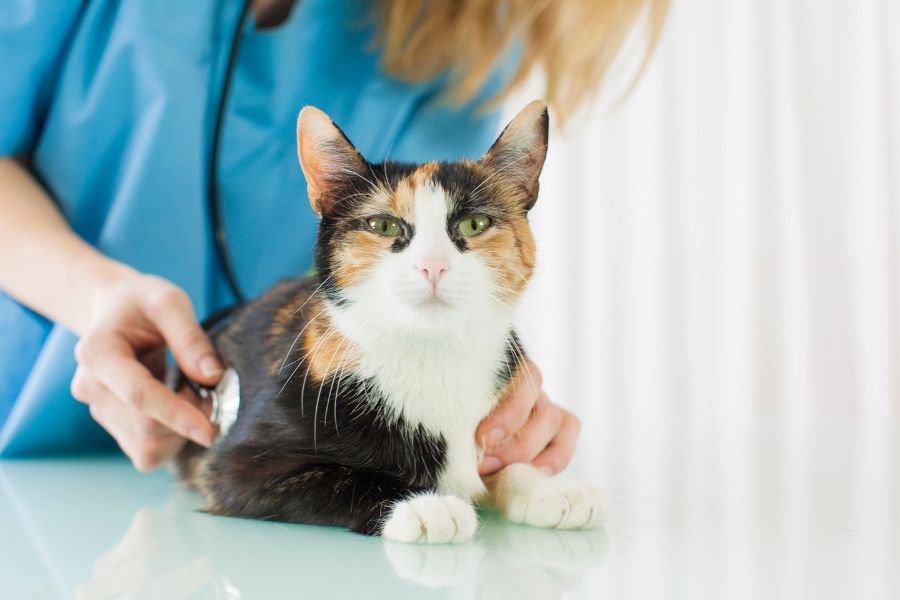
Image from Canva
Make an appointment with your veterinarian as soon as you have a good idea your PCS is coming. You’ll need to ensure that all vaccinations are up to date and get your pet a health certificate for overseas moves within ten days of leaving the country, so book this appointment early, but also ask your vet for flexibility when it comes to rescheduling. Remember, you’re tied to the availability of flights and passports.
Using a military vet for required paperwork is ideal because they’re well versed in the requirements. It’s also a good idea to check in with the Veterinary Treatment Facility at your new base. They’ll share a checklist that guides you through the steps needed for transport.
If you have a scaredy-cat or pup, discuss with your vet if the pros outweigh the cons of using an anti-anxiety medication. Sedatives can interrupt the natural process of how an animal regulates their body temperature when handling stress, leading to dire circumstances.
Compile a File for Your Furry Friends
Today, we gather essential records electronically and easily compile documents via smartphone applications or website links. The convenience of online access to your tail-wagger’s veterinary history can make transferring to a new office as easy as a walk in the park (or as simple as a romp with catnip?). Virtual records help your old vet connect with your new vet if there are issues lost in translation, for example, verifying shot records and testing for heartworms.
Boarding Your Pet
The best-case scenario for the end of a PCS is that you coast into your new driveway and let the pups and kitties out to explore their new home. But, more likely, you’re looking for a pet-friendly hotel while you wait for the previous tenants to leave, or you’re searching for temporary boarding.
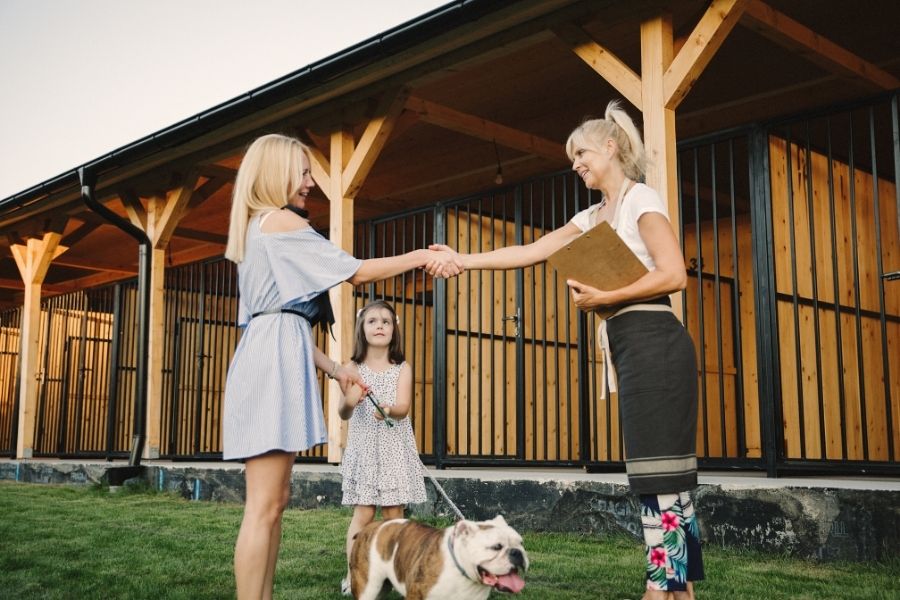
Image from Canva
Here are three tips to help you find somewhere to crash with your pets.
1) Always verify hotel and temporary rental pet policies.
You don’t want to show up with a pet you thought was legal but isn’t and have to leave. On the other hand, it’s worth a phone call to make sure the hotel’s “no pet policy” is updated online (the front desk crew knows the policy best). Or, check in with the owner of the perfect “no pets” rental you found. Maybe they’re in the financial position that they'd rather take a dog than zero bookings for the month.
2) Call your new veterinarian’s office.
Some facilities offer boarding, and if they don’t, they can refer you to either a kennel they trust or someone on staff who moonlights as a pet sitter in their house.
3) Search your new base, as some have pet care facilities.
Wouldn’t it be nice to have affordable pet care while you’re in temporary lodging? Pet care is wildly popular on base, so if you have an inkling this might be a boarding solution, go ahead and make the reservations and cancel within the no fee window if you can get into your house sooner.
If you’re moving during the holidays, the stakes are higher. Alternatives to Pet Boarding During the Holidays helps military families find more opportunities for care.
Start your pet transport plan early! There are so many decisions to make and restrictions on time and budget to work around, so plan with flexibility in mind. For example, maybe departing from an alternative airport keeps your dog on the ground longer. Or, if driving, shorten the days to make the car ride less stressful for the cat.
Enduring a move can be frightening for an animal. Do what you can to keep the best interests of your dear ones in mind. You’ll probably notice them trying to comfort your stressed state of mind, too. Offering your four-legged friends reassurance as well as having a family game plan for the changes ahead will set your course towards a smooth move.
By Dawn M. Smith
Get even more tips for your military move with our free series of PCS ebooks!


back to top